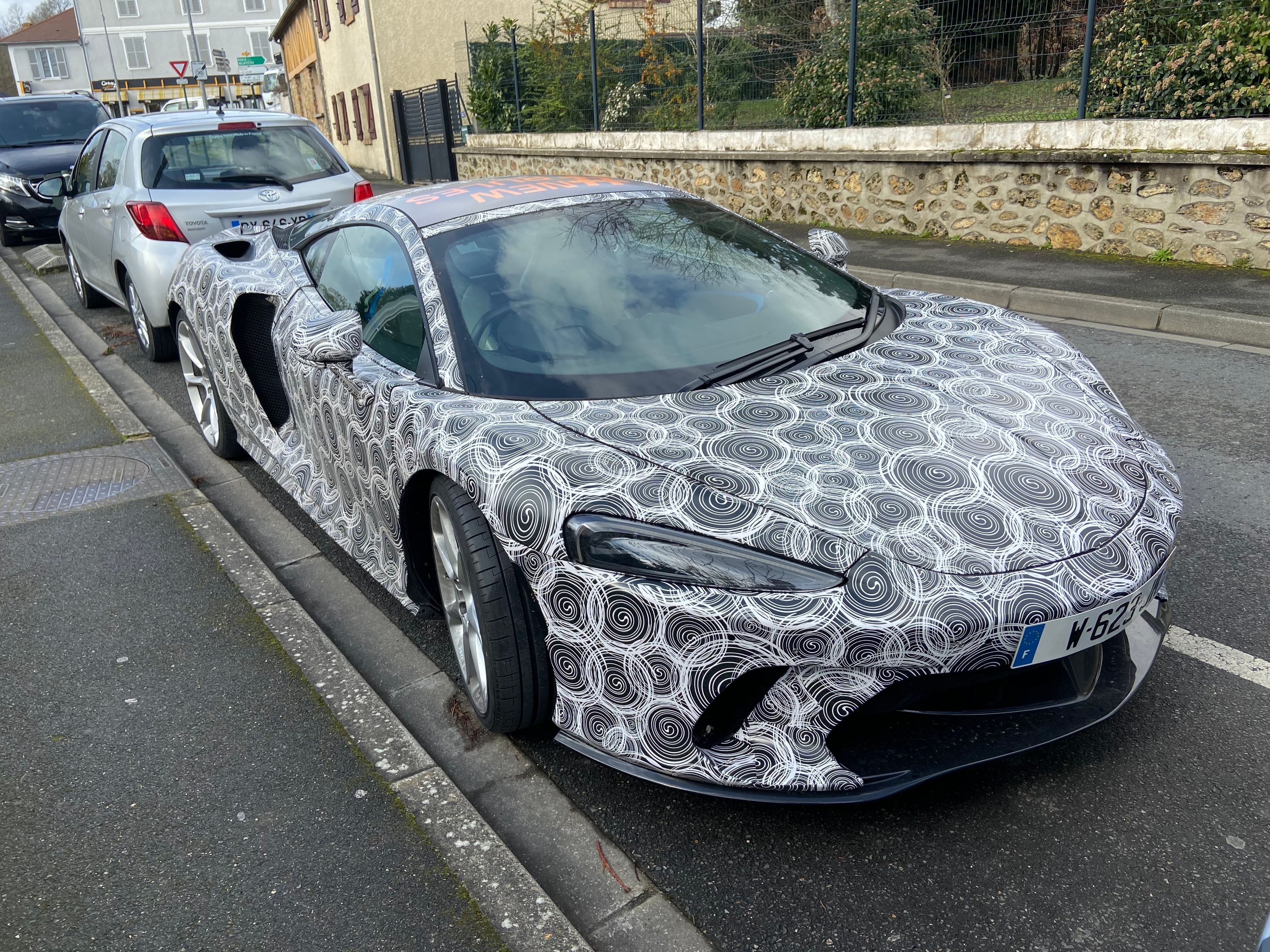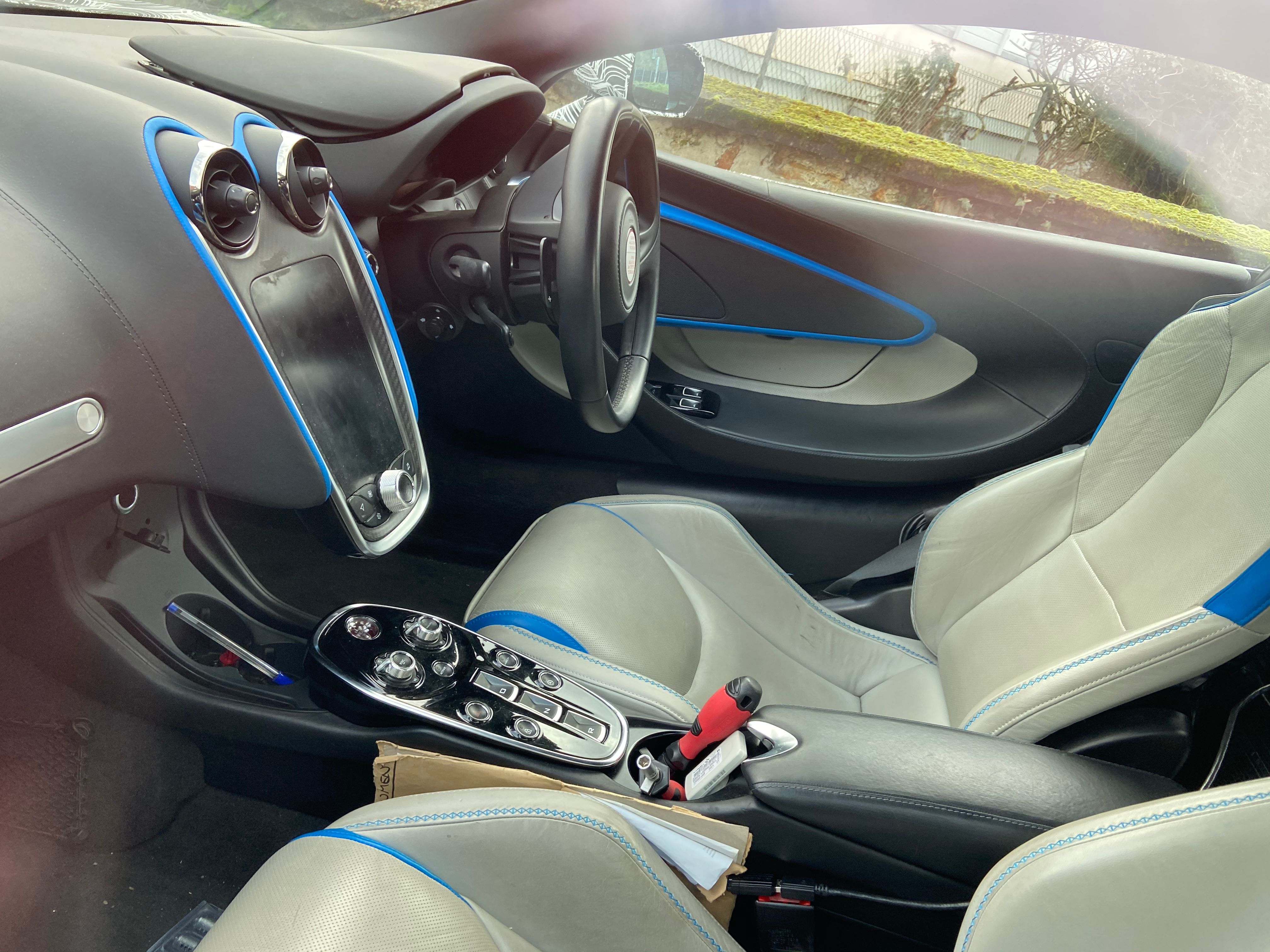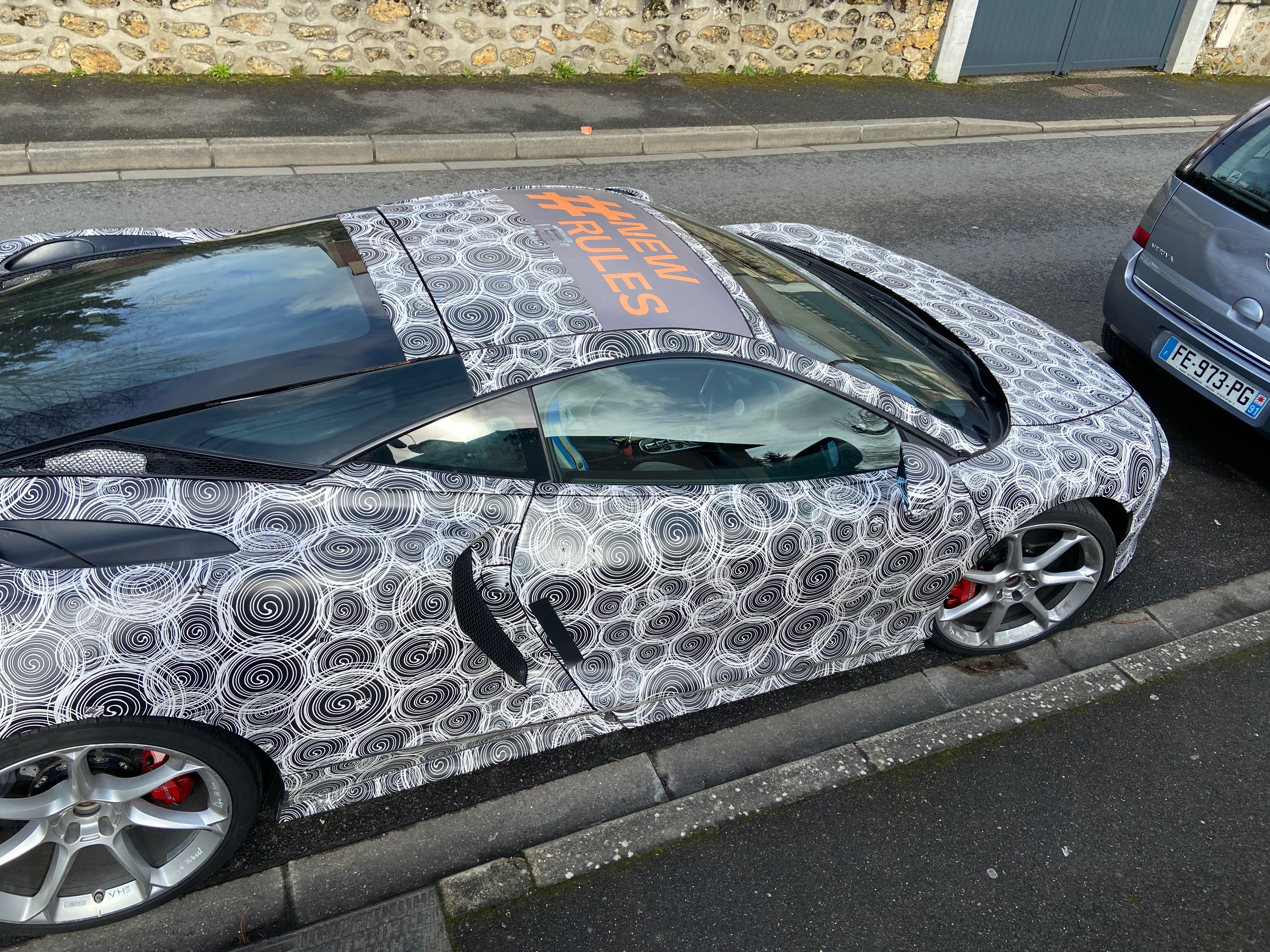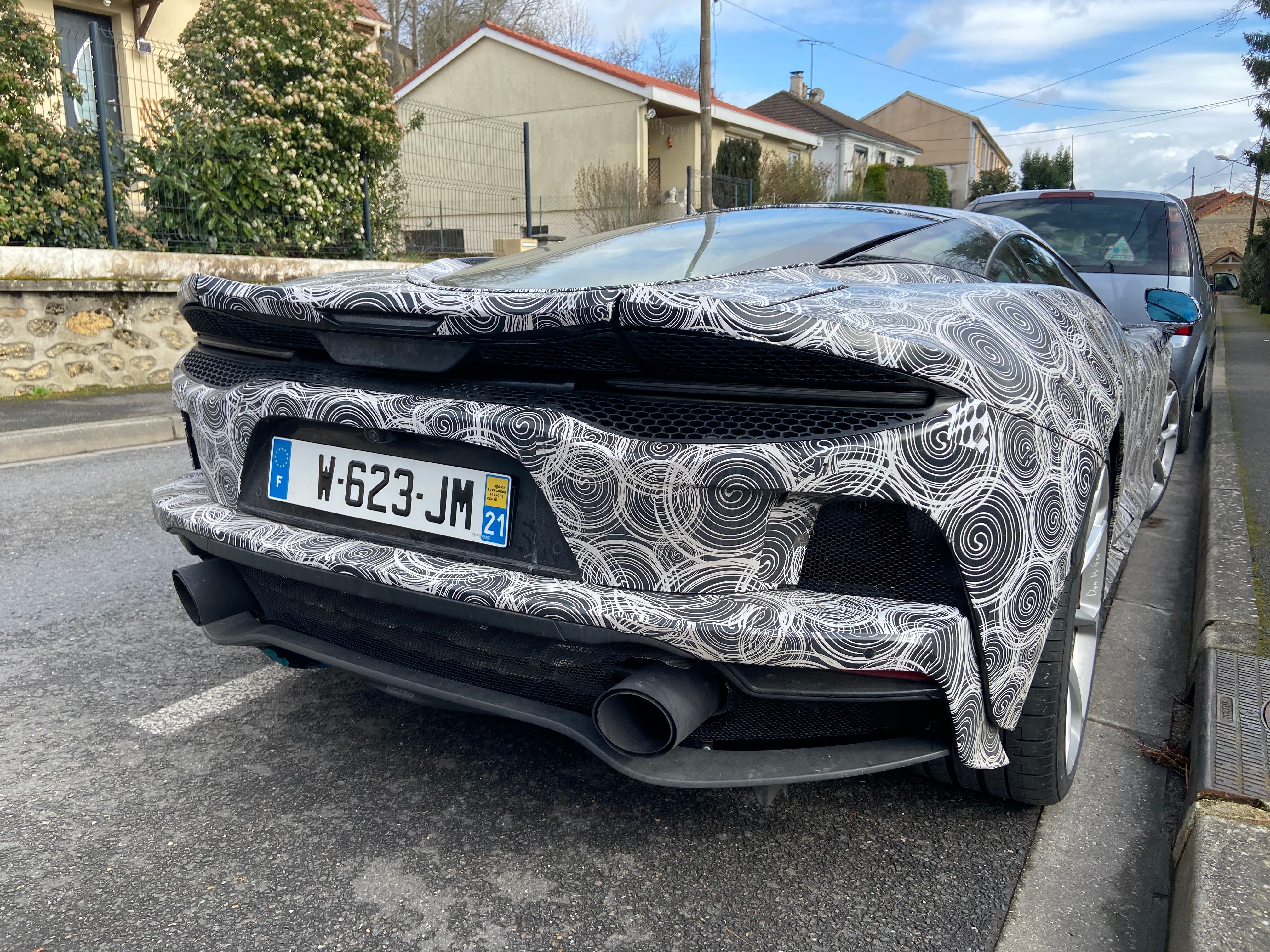The McLaren GT was introduced in 2019, and we know for sure that the mule we see here is, in fact, a McLaren GT. Be that as it may, it was caught in a residential neighborhood in France by a friend of Topspeed, and it certainly raises a few questions. First, why is there a camouflaged McLaren GT cruising around France? Second, why was it parked outside a residential area? Third, why do the wheels have “Dyn Wheel” written all over them? Well, we think that McLaren might be testing its new V-6 hybrid drivetrain.
We’ve Seen This Mule Before
|
|
ids=887343,887344 |
no_overlay=false |
before_label=New McLaren GT mule |
after_label=Old McLaren GT mule> |
Back before the McLaren GT was officially revealed, we saw mules that looked exactly like this one, right down to the style of wheels. Notice the #NewRules decal on the roof? That was the same hashtag that was plastered on the side of the official GT mule that McLaren teased before the big reveal. Outside of that hashtag on the roof and a French license plate, there’s nothing that sets this mule apart from the one spotted in early 2019. The rear intakes, front fascia, headlights, taillights, and rear spoiler are all the same.
Even the interior is largely familiar to the production McLaren GT. It has the same leather-wrapped sports seats, flat-bottom steering wheel, and horizontal infotainment system. Of course, it was parked, so we can say for sure the infotainment system isn’t different software-wise, but for the most part, this is the car we all know and love. A few things set it apart, though. The screwdrivers in the cup holder, for instance, hint at this being a mule that’s in service, as does the tracking device in the same cupholder. We can’t make out the title on the file folder, but it’s undoubtedly a log of some sort. If you look closer at the center console, you’ll see a data logger along with a cable that runs to the back. Zoom in behind the seats, and you’ll notice that there’s no trim in place and… some yellow writing.
Why Could This be a Hybrid McLaren GT?
With no obvious hints to go by, we could just be blowing smoke. But, think about the wheels - “Dyn Wheel” could mean that these are dynamically balancing wheels. The yellow writing on that component behind the rear seat, well it could be a warning for high voltage. We don’t spot any orange wiring – the default color used across the industry for high-voltage electric systems – but there’s more to this theory than what we can see in photos.
Near the end of 2019, McLaren CEO, Mike Flewitt, confirmed that a next-generation platform will be announced in the spring of 2020, and the first hybrid car to ride on this platform will be introduced before the end of 2020. That means testing of this system must already be underway as a review is coming within a couple of months. The plug-in hybrid powertrain in question would offer up to 20 miles of all-electric range. One of the new models is said to be a supercar and would be able to run up to 60 mph in as little as 2.3 seconds. We don’t think the McLaren GT Hybrid will be this car, but it’s entirely possible that this is an old mule that was fitted with next-gen components solely for testing purposes.
If this is the case, this McLaren GT isn’t sporting the usual V-8 either as the McLaren hybrid drivetrain system will mix a new V-6 engine with a set of electric motors in the front. That means this mule is also AWD. We can’t tell if there’s a hub nut in the center of the front wheels, but it could be possible. It still leaves the question of what this thing is doing in France and why it’s rocking so much camo. Neither makes a lot of sense, especially the camo part of the equation, considering most production models turned PHEV rarely change, and the mules rarely wear much in terms of camo. But, what do you think? Is this a McLaren GT Hybrid?
McLaren GT specifications
|
Engine configuration |
4.0-litre twin-turbo V8, 3,994cc |
|---|---|
|
Power PS (bhp/kW) @ rpm |
612 HP @ 7,500 RPM |
|
Torque Nm (lb ft) @ rpm |
465 LB-FT @ 5,500-6,500 RPM |
|
Transmission |
7 Speed+reverse SSG |
|
0-100km/h (0-62mph) |
3.2 seconds |
|
0-200km/h (0-124mph) |
9.0 seconds |
|
Maximum speed |
326km/h (203mph) |




